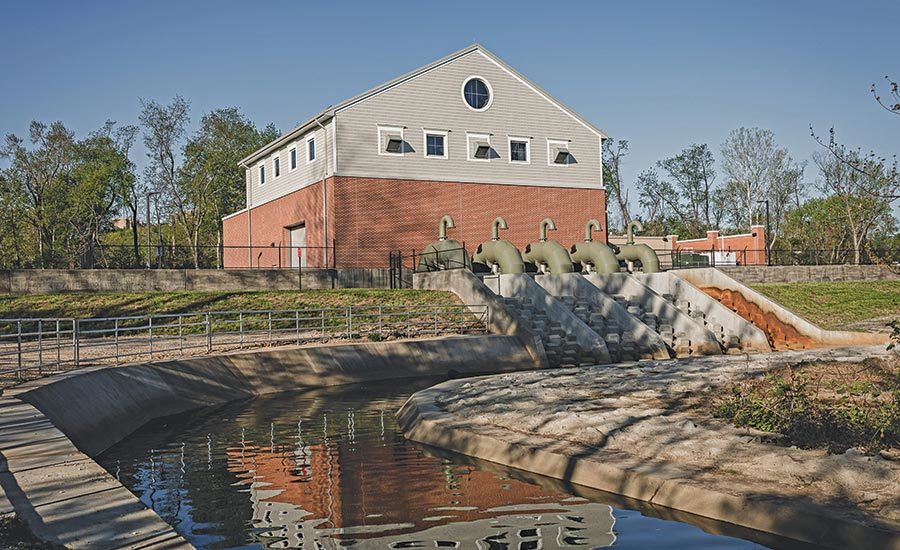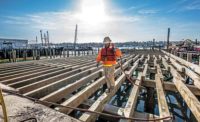Fairfax County Huntington Levee
Alexandria, Va.
BEST PROJECT
Owner: Fairfax County, Va.
General Contractor: Archer Western Construction
Lead Design Firm: Arcadis Design & Consulting
Subcontractors: C.H. Attick (Electrical); Harris Mechanical (HVAC/Plumbing); Regional Contracting Services (Rough Carpentry); Utilities Unlimited (Sanitary Sewer Relocation)
Having suffered three damaging floods over the past two decades, the more than 160 homes making up the Huntington community desperately needed long-term protection from other serious events that were sure to come.
The solution was this $38-million project, and its centerpiece: a 2,800-ft-long earthen levee. Rising to heights that range from 6 ft to 11 ft, the earthen embankment is topped by a 4-ft-high concrete wall and integrated with an extension of the area trail network. A new two-stage automated pump station housing separate pumps for large storm events and low-flow conditions completes the system.
All projects strive to minimize unknowns, but weather was one factor the project team could do little about. The untimely arrival of a severe storm during construction might well worsen the existing hazards for both residents and workers, prompting the team to map out concurrent construction and flood management strategies.
Given the levee’s location adjacent to a tributary of the Potomac River, keeping the construction site as dry as possible was an ongoing concern. Dewatering pumps operated nonstop to divert groundwater from excavations. Extensive planning was needed to sequence demolition of six existing stormwater outfalls without impairing existing drainage systems.
The contractor also built temporary high ground above flood elevation to safeguard equipment, tools and other material from severe storms that often arrived with little warning.
The extra precautions paid off, as the storm events caused no significant disruption to work flow or schedule.
Project employees played a key role in ensuring all work could be carried out safely, particularly with the preponderance of open trenches for more than 4,000 linear ft of buried pipe. Slopes for all excavations assumed the presence of highly unstable soil to preserve accessibility.
Deeper excavation hazards were mitigated with trench boxes and slide rails, which were continually inspected to verify proper set-up and function. Other safety concerns were addressed through daily discussions about observations and corrective measures. The discussions fostered a proactive exchange of ideas about how well those actions mitigated risks.
ENR’s judges praised this collaborative approach, which resulted in nearly 115,000 work hours with no recordable incidents or lost-time injures.
“Employees were encouraged to participate in the safety planning process,” said one safety judge, “and they seized the opportunity given to them to create a safe work environment on a challenging project.”
Rather than waiting for Mother Nature to provide a sufficiently large rain event to test the new stormwater management network, the project team manually flooded the site to the elevations anticipated for a hundred-year storm and activated the pump system’s automatic controls to drain the site.
Completed on schedule and on budget, the levee and automated pump system were put to the test a short time later, when a major storm inundated the area.
The system performed as designed, efficiently draining the community and safely collecting stormwater for controlled discharge into the environment.






